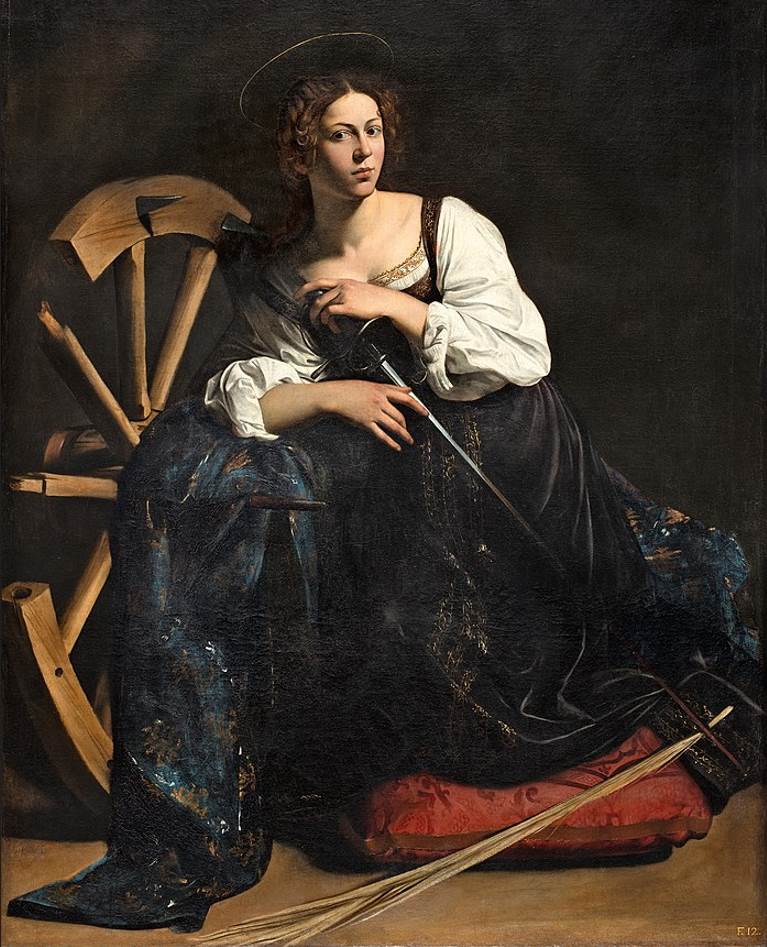Even though Michelangelo Merisi da Caravaggio (1571-1610), better known as simply “Caravaggio,” wasn’t the most enjoyable company to have around, he did possess a unique talent that inspired countless renowned artists throughout history.
Considered to be one of the most renowned Baroque artists in history, he is world-famous for developing a style referred to as “tenebrism,” the dramatic use of contrast between light and dark known as chiaroscuro.
He wasn’t the first artist in history to use this technique, but he was the most influential one. He influenced to some extent the works of Peter Paul Rubens, Gian Lorenzo Bernini, and Rembrandt, to name just a few.
An entire school of artists under his influence is known as the “Caravaggisti” or “Tenebrists,” a notion that emphasized his weight in the history of art.
Let’s take a closer look at some of the most famous Caravaggio paintings so you can see why this troubled man was such a remarkable talent.
1. Young Sick Bacchus
- Date created: 1593
- Dimensions: 67 × 53 centimeters (26 × 21 inches)
- Location: Galleria Borghese, Rome, Italy
Young Sick Bacchus is a self-portrait that Caravaggio created while he was in his early twenties. It’s clear from the look of the depicted man that he wasn’t feeling too well.
Based on the skin color and the jaundice of his eyes, experts have concluded that he might have had malaria at the time. Regardless, the artist used this small work to market himself to patrons, emphasizing his skill as a still-life and portrait painter.
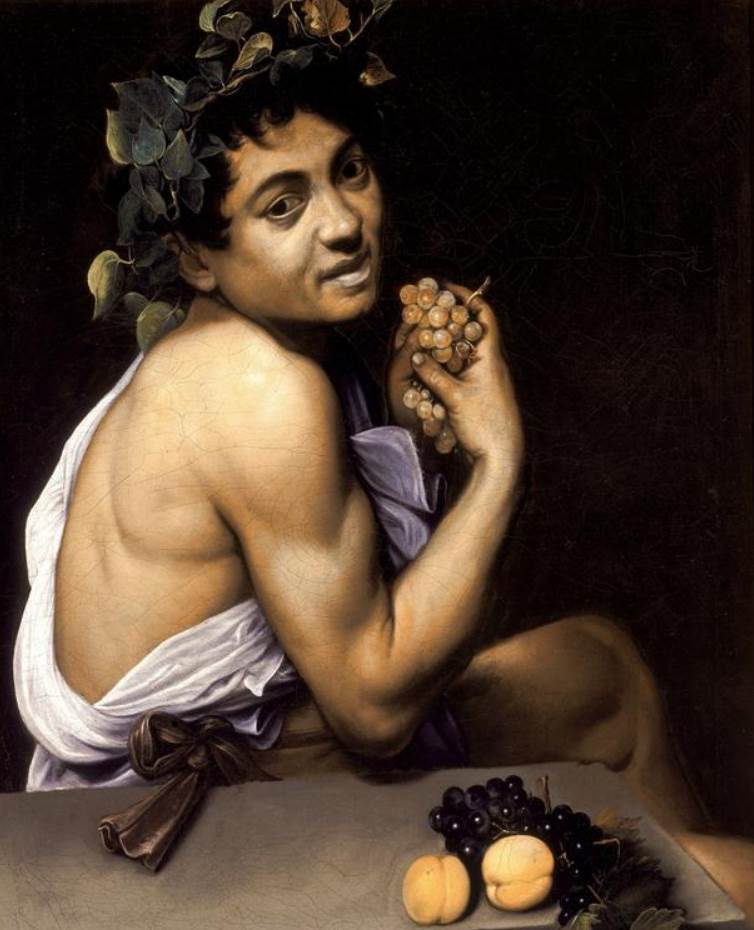
2. The Calling of St Matthew
- Date created: 1599-1600
- Dimensions: 322 × 340 centimeters (127 × 130 inches)
- Location: San Luigi dei Francesi, Rome, Italy
The Calling of St Matthew is one of the works that solidly established Caravaggio as a master. He struggled initially following his arrival in Rome, but this commission for the Contarelli Chapel of the San Luigi dei Francesi changed all of that.
He never had problems acquiring commissions again because this work was received with great praise. It depicts the moment that Jesus Christ encourages Saint Matthew to start following him.
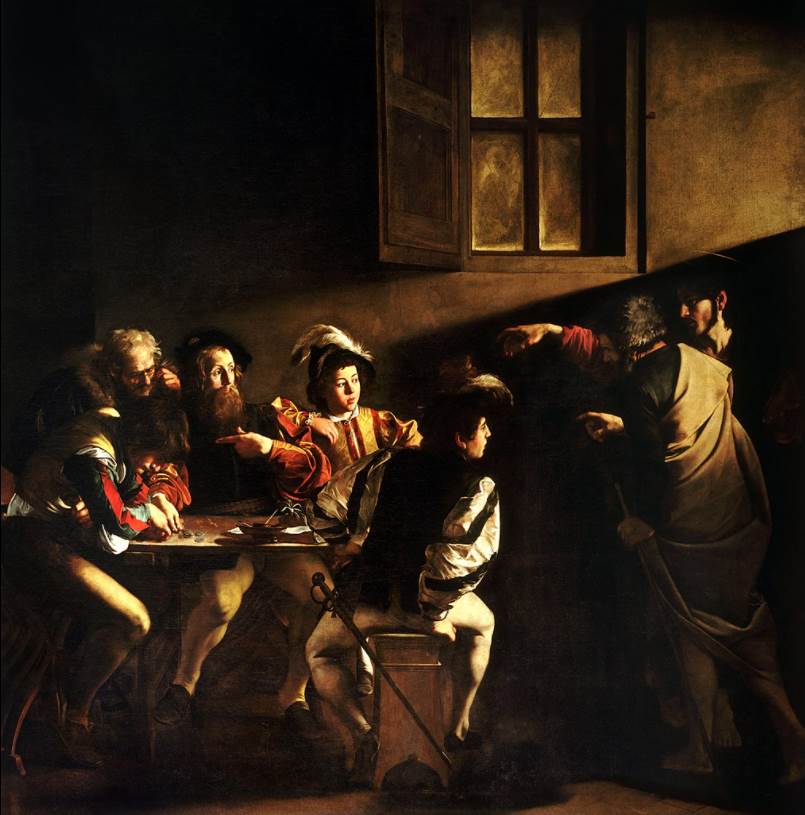
3. The Entombment of Christ
- Date created: 1603-1604
- Dimensions: 300 × 203 centimeters (120 × 80 inches)
- Location: Pinacoteca Vaticana, Vatican City
The Entombment of Christ is one of the most celebrated altarpieces that Caravaggio ever created. It hangs in a church in Vatican City and serves as the altarpiece of one of the chapels inside the building.
It’s one of those works that had a great impact on other artists, something emphasized by the fact that it has been copied numerous times. Copiers include some of the greatest artists in history such as Rubens, Fragonard, Géricault, and Cézanne.
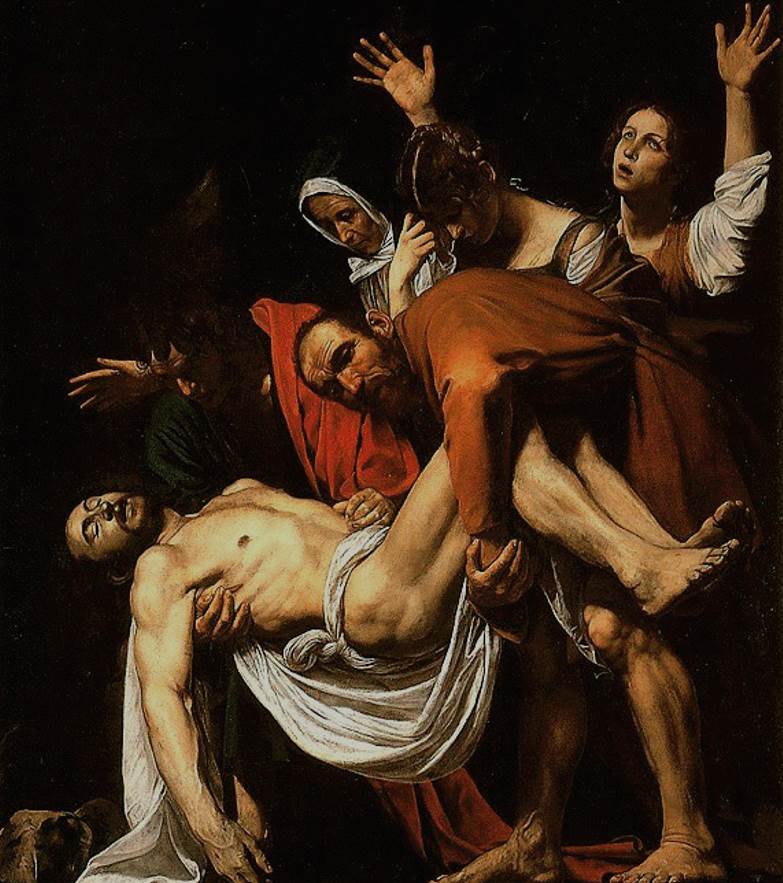
4. Basket of Fruit
- Date created: 1599
- Dimensions: 46 × 64.5 centimeters (18 × 25.4 inches)
- Location: Biblioteca Ambrosiana, Milan, Italy
Basket of Fruit is considered to be the most famous still-life created by the artist and depicts a basket of fruit that is in less than great condition. The rotting fruit inside the basket has been a point of discussion for quite some time among art historians.
The general conclusion is that it revolves around the theme of fading beauty. The date of the painting is also a point of discussion with various historians dating it anywhere between 1596 and 1601.
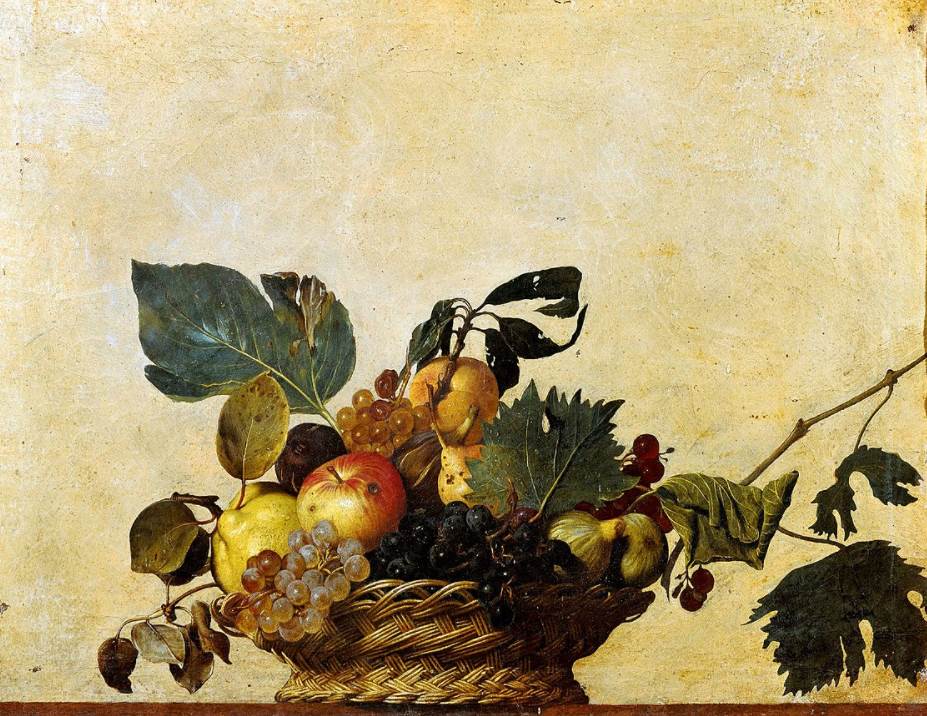
5. Boy with a Basket of Fruit
- Date created: 1593
- Dimensions: 70 × 67 centimeters (28 × 26 inches)
- Location: Galleria Borghese, Rome, Italy
Boy with a Basket of Fruit is another painting that Caravaggio created during his early period in Rome following his flee from Milan. The model for the painting was one of his closest friends called Mario Minniti, a painter from Sicily, at the age of 16.
The fruit is believed to have been depicted as it was without any idealization. it also depicts the boy in an alluring pose, something that might reveal the sexuality of the artist, even though he prominently denied the allegation.
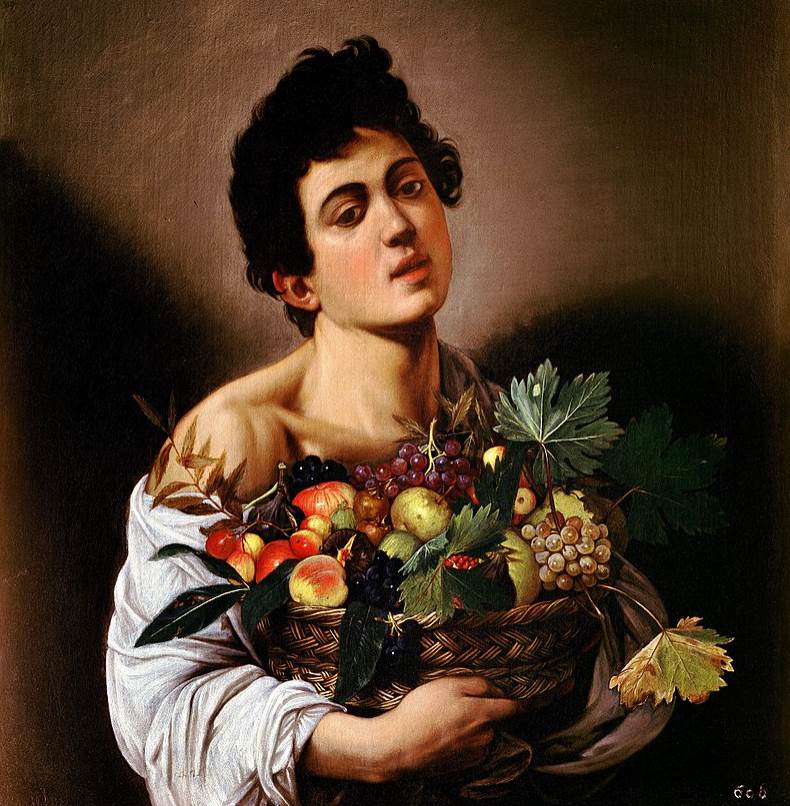
6. The Cardsharps
- Date created: 1594
- Dimensions: 94 × 131 centimeters (37 × 52 inches)
- Location: Kimbell Art Museum, Fort Worth, United States
The Cardsharps is considered to be a move forward in his career as he already graduated from painting fruit and still-life paintings at the time. It was a time that he was still struggling and trying to make a name for himself.
It’s also certain that Caravaggio created multiple versions of this subject, even though the one acquired by the art museum in Forth Worth is considered to be the original.
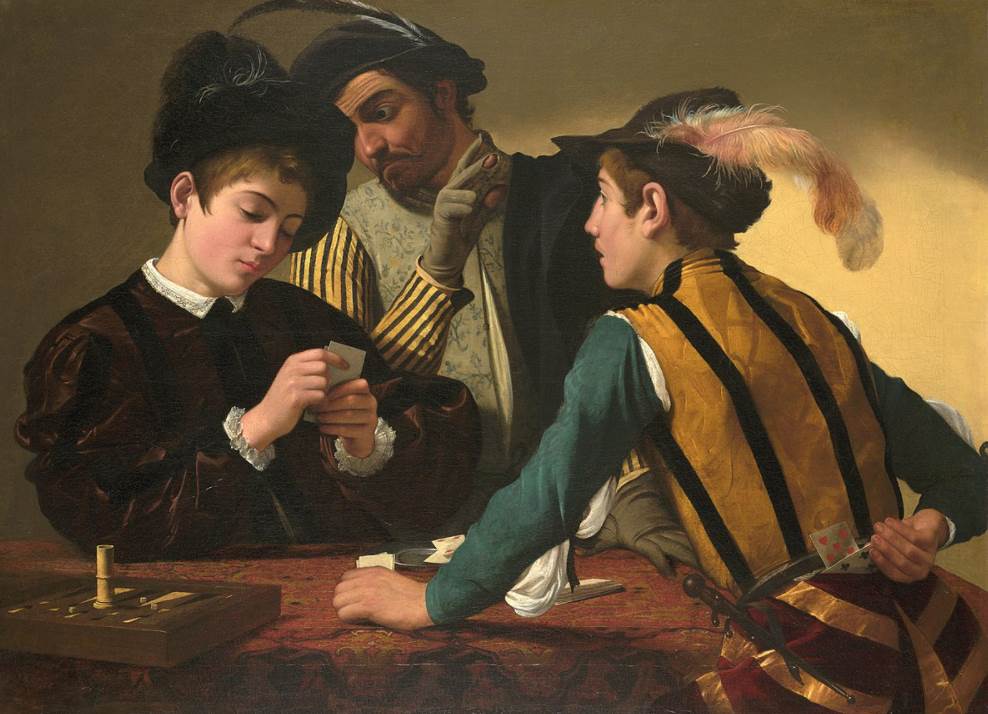
7. The Crucifixion of St Peter
- Date created: 1601
- Dimensions: 230 × 175 centimeters (91 × 69 inches)
- Location: Santa Maria del Popolo, Rome, Italy
The Crucifixion of Saint Peter is a work that was commissioned to decorate the Cerasi Chapel of the Santa Maria del Popolo church in Rome. It’s adjoined by another of his works called the Conversion of Saint Paul on the Road to Damascus.
The two works by Caravaggio are facing each other in the chapel. In the middle, there’s another famous artwork by Annibale Carracci called “The Assumption of the Virgin.” These three masterpieces are an intriguing sight to behold in this chapel.
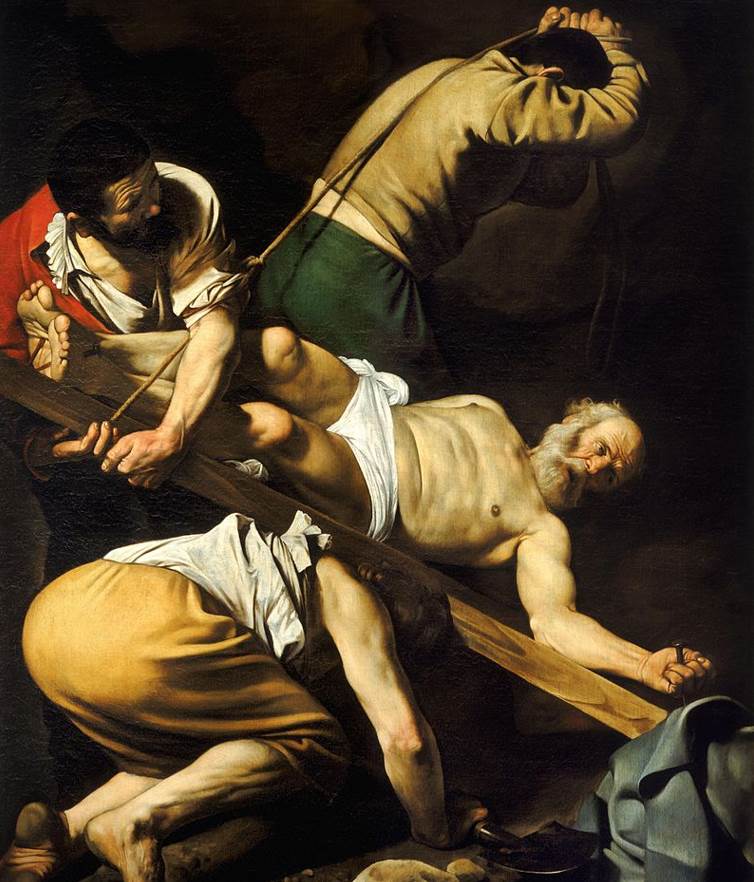
8. The Taking of Christ
- Date created: 1602
- Dimensions: 133.5 × 169.5 centimeters (52.6 × 66.7 inches)
- Location: National Gallery of Ireland, Dublin, Ireland
The Taking of Christ is a painting that depicts the arrest of Jesus Christ by Roman soldiers. It was a commission from one of the artist’s patrons in 1602, a Roman nobleman named Ciriaco Mattei.
The three figures on the left are John, Jesus, and Judas. It depicts the moment shortly after Judas kissed Jesus, the sign that identified him to the Roman Soldiers according to the story in the Bible.
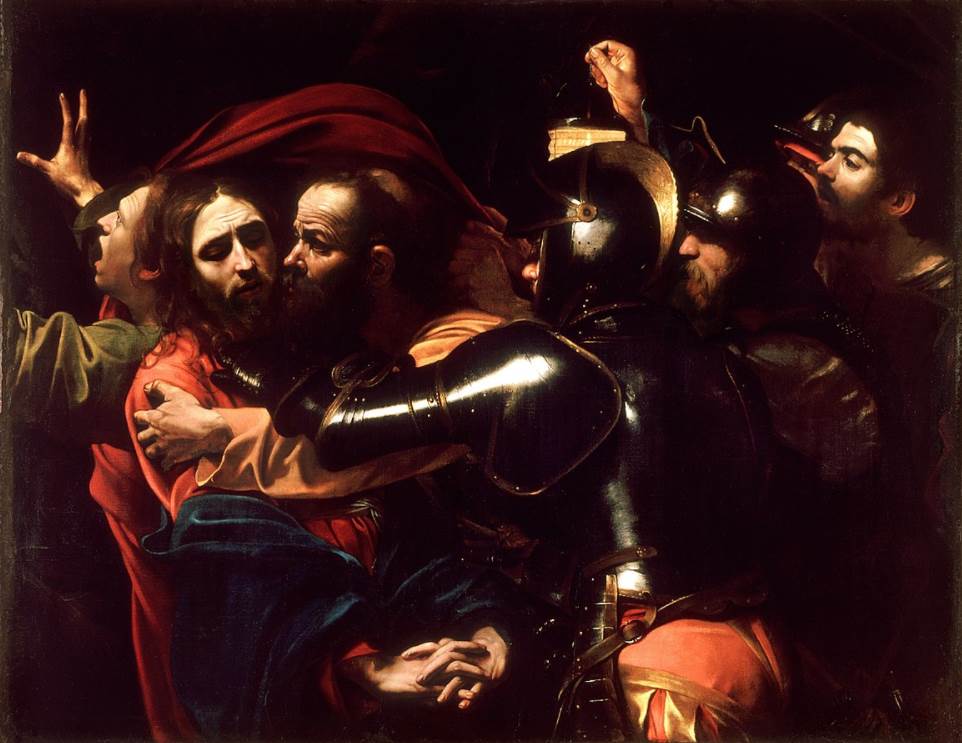
9. Saint Francis of Assisi in Ecstasy
- Date created: 1595
- Dimensions: 92.5 × 127.8 centimeters (36.4 × 50.3 inches)
- Location: Wadsworth Atheneum, Hartford, Connecticut, United States
Saint Francis of Assisi in Ecstasy is a remarkable work in the oeuvre of Caravaggio because it’s considered to be his first commission of a religious theme. It was painted while he was under the patronage of Cardinal Francesco Maria Del Monte.
The painting depicts the moment that Saint Francis of Assisi received the signs of the stigma, and the wounds left behind by Jesus’ crucifixion. The scene isn’t overly dramatic as most of the works later on in his career.
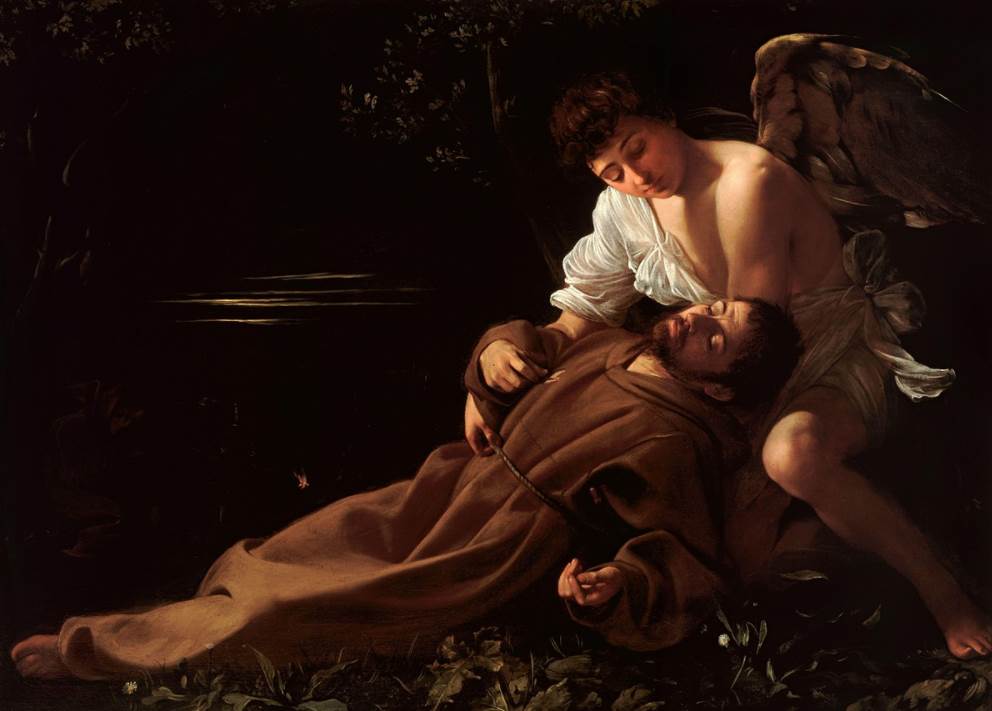
10. Supper at Emmaus
- Date created: 1601
- Dimensions: 141 × 196.2 centimeters (56 × 77.2 inches)
- Location: National Gallery, London, United Kingdom
Supper at Emmaus is a painting that was originally commissioned by the brother of an influential cardinal in Rome named Ciriaco Mattei. It depicts the moment that Jesus reveals himself following his resurrection.
This event happened in the town of Emmaus according to the Gospel of Saint Luke. Shortly after this moment, Jesus would vanish in front of the baffled Luke and Cleopas. Another version of this painting is located at the Pinacoteca di Brea in Milan.
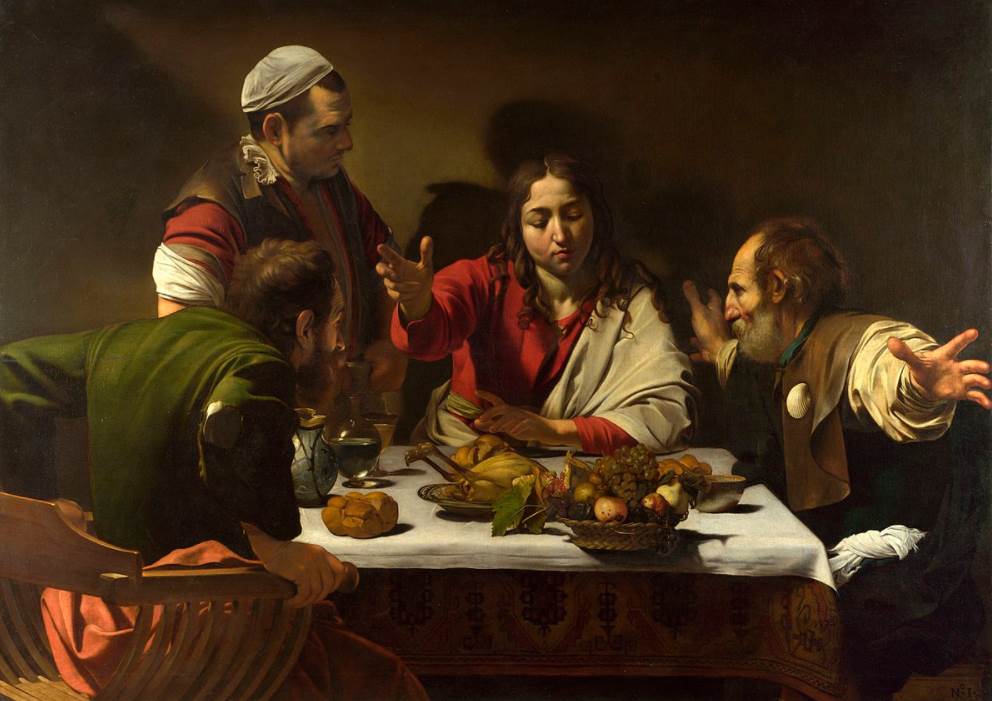
11. Saint Catherine of Alexandria
- Date created: 1598-1599
- Dimensions: 173 × 133 centimeters (68 × 52 inches)
- Location: Thyssen-Bornemisza Museum, Madrid, Spain
Saint Catherine of Alexandria is a painting that Caravaggio completed shortly before he became the most famous painter in Rome. It depicts a Christian saint of noble descent who was martyred during the Christian persecution in the early 4th century.
Caravaggio likely used a local prostitute named Fillide Melandroni (1581-1618) as the model for this painting, a controversial decision at the time. She appears in several other of the artist’s paintings and is depicted next to the breaking wheel to which she was sentenced.
